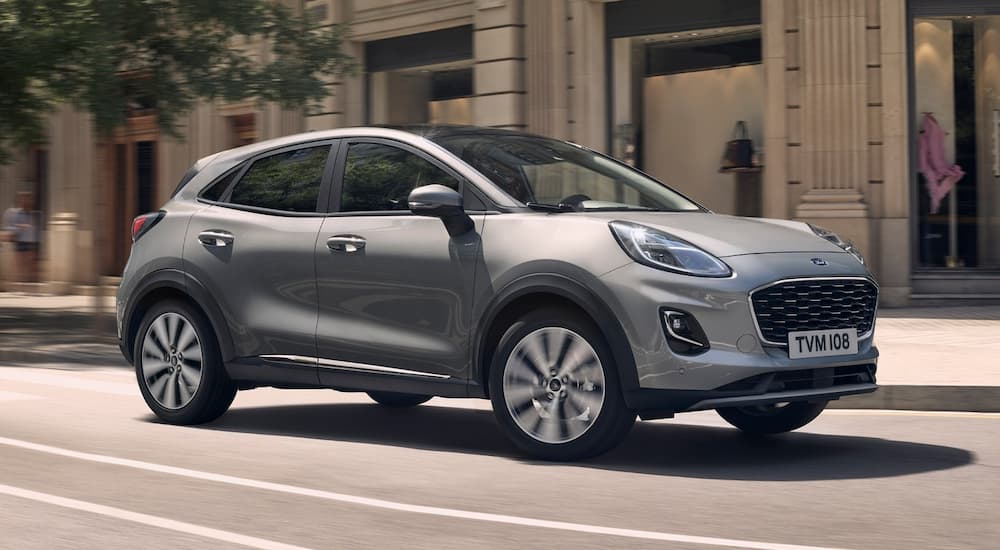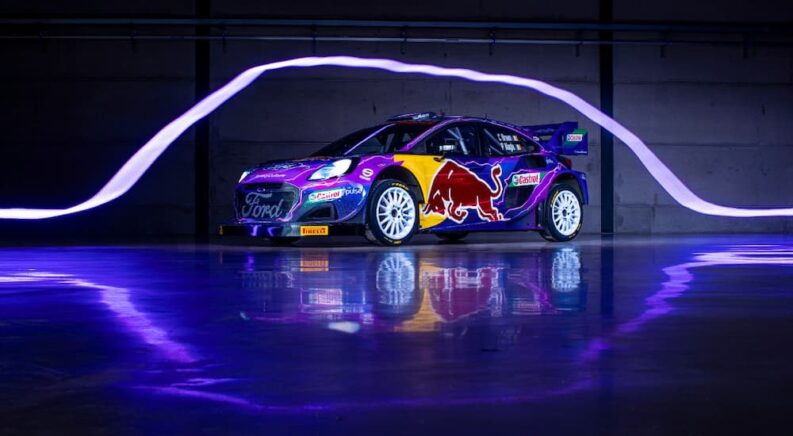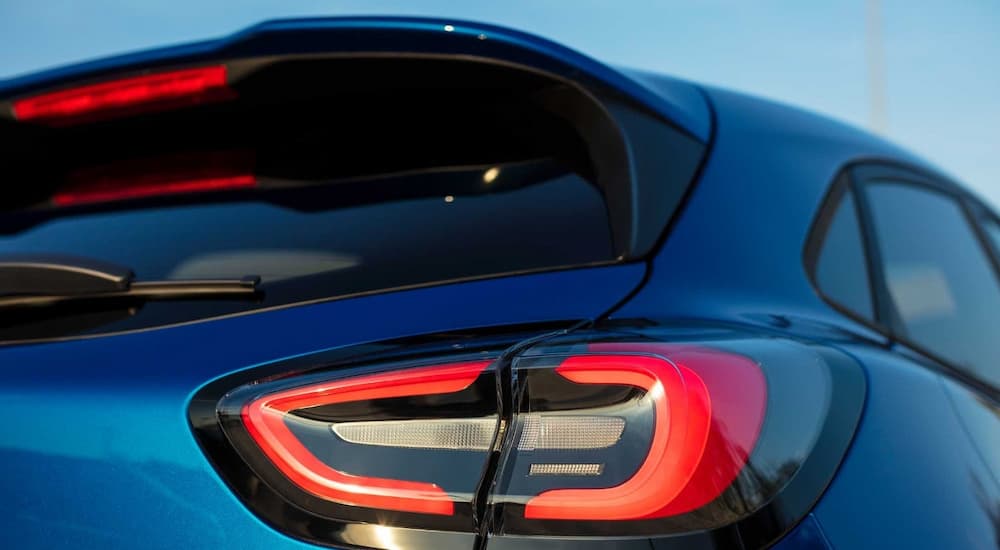Back in November, Ford announced that the EcoSport had finally met its timely and unlamented end. Ford’s smallest SUV never had much going for it beyond its low price, as its decidedly unsporty engine options weren’t even that eco-friendly. However, the discontinuation of the EcoSport means more to car enthusiasts than the chance to say good riddance to one of the most underwhelming vehicles on the market. It has left American Ford SUV dealers without a subcompact model, a gap that probably won’t remain open long, given the growing popularity of these lifted hatchbacks.
While we don’t know for sure how, when, or even if Ford will introduce a replacement for the EcoSport, there is a remarkably exciting candidate for the position waiting in the wings over in Europe. The Ford Puma debuted in 2019 as a grown-up Ford Fiesta, and like the strangely-endearing Fiesta, the Puma has an unexpected performance side. In fact, it even has two victories in the World Rally Championship to its name!
The Puma: What You Need to Know
At first glance, the Ford Puma isn’t the most exciting car. In fact, aside from its high-mounted, almost Porsche-like headlights, it’s about what you would expect from an affordable European-market Ford SUV. Sleek but inoffensive lines lend it a certain amount of grace, giving it some claim to its feline namesake and lending it a familial resemblance to the recently restyled Ford Escape. The Puma’s 102-inch wheelbase and 165-inch overall length land it squarely between the EcoSport and the Escape in size, which should also help make it a bit more popular with American drivers.
Inside, the Puma is rather well-equipped for its size and price point. An eight-inch floating infotainment display and a 12.3-inch digital driver display lend it a rather modern feel, and it even offers a ten-speaker Bang & Olufsen sound system (that’s the same system available in the Ford Escape). Quilted leather seats, automatic climate control, keyless entry, and the other comfort features expected in a quality SUV are all present. It’s definitely a step up from the old EcoSport.
In the British market, the 2023 Puma starts at £24,920 for the base trim (just under $30,000) and climbs to £31,045 for the top ST trim (roughly $37,300). That’s rather steep for a subcompact SUV here in America, but we can expect the price to go down considerably if it makes it to our shores. After all, the Brits are paying £30,775 for the 2023 Ford Escape (almost exactly $37,000), which is roughly 35% higher than the MSRP here in the states. We expect an American-market Puma would cost a bit more than the EcoSport, likely starting at around $24,000.

Powertrain Options
The bad news about the current Puma is that, like most European-spec cars, it is decidedly underpowered. The base model comes with a 1.0L three-cylinder engine that produces just 125 hp and is paired with a six-speed manual transmission. This is actually the same engine that powered the base-model EcoSport, and while it might be acceptable for drivers who live in large cities and never use the highway, the Puma will need something more to succeed in America.
Fortunately, there is another powertrain available in the base European-spec Puma. This is a hybrid version of the same 1.0L three-cylinder, generating either 155 hp with the manual transmission or 125 hp with the optional seven-speed dual-clutch automatic. We’re not sure why the automatic is downrated, but a 155-hp hybrid is not a bad powertrain for a subcompact SUV. In fact, it would be more powerful than the majority of the current options in the segment.
Making the Puma a hybrid would also appeal to budget-oriented drivers that often shop smaller for smaller vehicles. It is actually surprising how few hybrid options exist in this segment, with the main contender being the relatively unpopular Kia Niro. Given Ford’s recent push for hybrid powertrains in the redesigned 2023 Escape and its decision to sell the Ford Maverick as a standard hybrid, we would not be surprised to see an American-spec Puma unveiled with the 155 hp hybrid as the standard powertrain.
The Puma ST
Although a Puma Hybrid would likely be a solid business case, that is not what makes this model exciting. Driving enthusiasts will be happy to learn that there is a Puma ST available in Europe that continues the tradition of the Fiesta ST. This sporty model receives a ton of aesthetic upgrades, including a dual-tip exhaust, black roof, and extended spoiler. Inside, there are well-bolstered sports seats and a flat-bottom steering wheel. The Puma ST also has four selectable drive modes, including a Track mode that prominently displays “Race Track Use Only” in the digital instrument cluster when it is selected.
Under the hood is a 1.5L EcoBoost three-cylinder producing 200 hp and 210 lb-ft of torque, paired with a standard six-speed manual transmission. While we, unfortunately, expect that the stick shift would be replaced with an automatic if the Puma ST ever makes its way to America, that amount of power in such a small vehicle is actually rather impressive. In fact, it puts the Puma ST ahead of the Hyundai Kona N-Line, which only produces 195 hp and 195 lb-ft of torque from its turbocharged 1.6L four-cylinder. Introducing this model to the American market would give Ford a solid entry in the growing performance subcompact SUV segment, especially if it decides to give us the manual transmission as an option.
The Puma Rally1
Remember when we mentioned that the Puma is a WRC winner? Well, it’s true. In 2021, the Ford M-Sport World Rally Team decided it was time to replace the Ford Fiesta with something more modern and chose the Puma. Of course, the Puma Rally1 is a full race car and not something that will ever be sold at Ford dealers anywhere in the world, but it goes to show just how fun and capable this little SUV can be.
The rally-spec Puma is gutted and lowered with a widebody kit, massive rear wing, and side intakes. Power comes from a 1.6L EcoBoost four-cylinder engine paired to a 100 kW electric motor and 3.9 kWh battery in a plug-in hybrid powertrain. A five-speed sequential transmission and a sophisticated all-wheel drive system round out the performance features of this race car.
In its brief time in the WRC, the Puma Rally1 has already been driven to victory in the 2022 Monte Carlo rally by rally legend Sebastien Loeb and won the 2023 Rally Sweden at the hands of Ott Tanak. We hope that the success of this car in the WRC may encourage Ford to build a Puma RS in the future, allowing shoppers to enjoy a more potent powertrain than the current Puma ST offers. However, there isn’t even a hint that such a move is in the cards currently.
A Ford Subcompact Americans Can Enjoy
Although the Ford Puma remains European-market only for the time being, there is hope that it may be making its way to America in the near future. Not only is there the subcompact gap left by the departure of the Ford EcoSport, but Ford CEO Jim Farley has mentioned on Twitter that he would like to see the Puma make its way over to the States. While we aren’t holding our breath just yet, we wouldn’t be surprised to see it pop up at Ford dealerships as part of the 2024 lineup.





